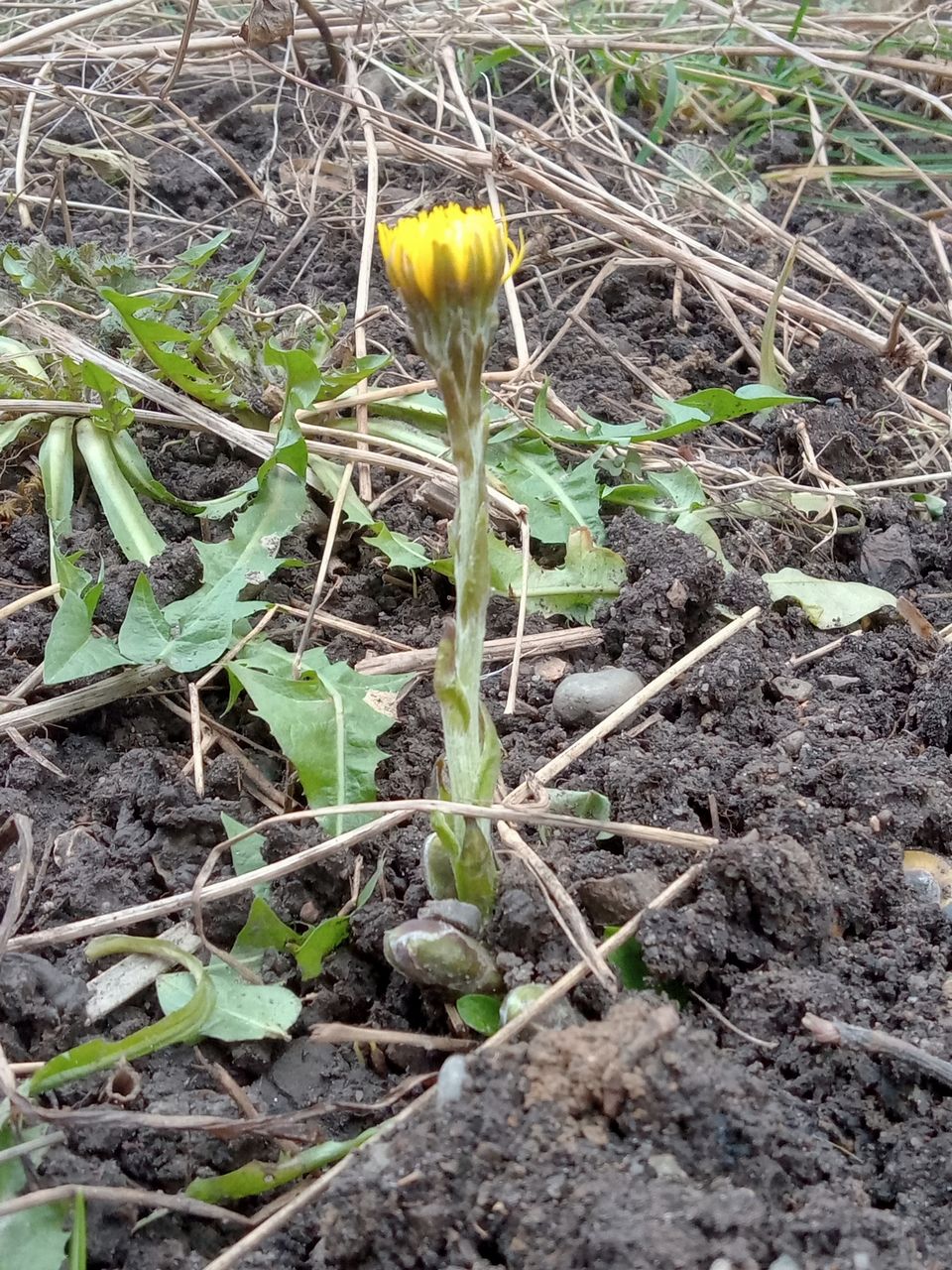Tussilago farfara 7506
Author: Carl von Linné (1707-1778)Family: Asteraceae Subfamily: Asteroideae Tribe: Senecioneae Subtribe: Tussilagininae
Genus: Tussilago
English name: Coltsfoot
Zone: Mediterranean
Edible plant
It is edible thanks to its flowers, stems and leaves, young or mature. The flowers, aromatic stems (without scales) and young shoots can be eaten raw in salads or cooked, either steamed or pan-fried. Mature leaves can be eaten cooked on their own, knowing that their rubbery texture requires long cooking. Most often, they are used to enter into the composition of preparations such as donuts, soups or gratins.
References
- Plantes comestibles, cueillette & recettes des 4 saisons, C. Anglade, G. Lalière, C. Leray. 2012. ISBN

Tussilago farfara Observed in Germany by Benjamin Mayer (license)
General specifications
Indigenous plant
Biological type: plant
Frost resistance: 5ºF
Leaf color: dark green
Flower color: yellow
Specifications for the Mediterranean basin
Adult size (h x w): 0,6ft x 0,6ft
Sun exposure: part sun (Sun hours: >3h <6h Foliage: deciduous
Growth: fast
Flowering time from March until May
Specific information for our garden
Planting substrate: 40%Compost+20%Peet+40%Sand
Plant watering: 3x a week pH 5.5
Logical sequence of containers for: Perennials; forestry plate 8cm, 1L container, 2L forestry pot, 6L container, 55L container
Propagation is done by root division
Frost resistance: 5ºF
Leaf color: dark green
Flower color: yellow
Specifications for the Mediterranean basin
Adult size (h x w): 0,6ft x 0,6ft
Sun exposure: part sun (Sun hours: >3h <6h Foliage: deciduous
Growth: fast
Flowering time from March until May
Specific information for our garden
Planting substrate: 40%Compost+20%Peet+40%Sand
Plant watering: 3x a week pH 5.5
Logical sequence of containers for: Perennials; forestry plate 8cm, 1L container, 2L forestry pot, 6L container, 55L container
Propagation is done by root division
Sowing instructions
SPRING Sow the seeds at 2mm depth in the Well Drained Seed Sowing Mix between 59-68°F. During germination keep the substrate moist and in daylight.
The average seed weight is 4761,9 per gram (0,00021g).
Germination references
- Seeds: Ecology, Biogeography, and, Evolution of Dormancy and Germination, Baskin, Carol and Baskin, J.M. 2014 pag. 1-1586. DOI
The average seed weight is 4761,9 per gram (0,00021g).
Germination references
- Seeds: Ecology, Biogeography, and, Evolution of Dormancy and Germination, Baskin, Carol and Baskin, J.M. 2014 pag. 1-1586. DOI
Experiences in the garden
20-01-20A Obtaining seeds from seed provider Sandeman.
31-03-20 Sown 30 seeds in a tray, they did not geminate.
Protocol: Spring Surface Sowing mix+Sand 59-68°F Damp substrate+Light
18-01-21 Sown 30 seeds in a tray, they did not geminate.
Protocol: Spring 2mm Aquatic sowing mix <59°F Damp substrate+Light
26-07-22 Sown 20 seeds in a tray, they did not geminate in Serre8.
Protocol: Spring 2mm Sowing mix+Sand >77°F Damp substrate+Light
08-08-23 Sown 12 seeds in a seed plate ½, they did not geminate in Serre8.
Protocol: Autumn 2mm Sowing mix+Sand >77°F Damp substrate+Light
18-03-25 Sown 18 seeds in a seed plate ½, they did not geminate in Serre8.
Protocol: Spring 2mm Sowing mix+Sand 59-68°F Damp substrate+Light
03-08-20B Obtaining seeds from seed provider Sheffields. Stock
19-03-21 Sown 30 seeds in a tray, they did not geminate.
Protocol: Spring 2mm Aquatic sowing mix 59-68°F Damp substrate+Light
26-07-22 Sown 20 seeds in a tray, they did not geminate in Serre8.
Protocol: Spring 2mm Sowing mix+Sand >77°F Damp substrate+Light
08-08-23 Sown 12 seeds in a seed plate ½, they did not geminate in Serre8.
Protocol: Autumn 2mm Sowing mix+Sand >77°F Damp substrate+Light
18-03-25 Sown 18 seeds in a seed plate ½, they did not geminate in Serre8.
Protocol: Spring 2mm Sowing mix+Sand 59-68°F Damp substrate+Light